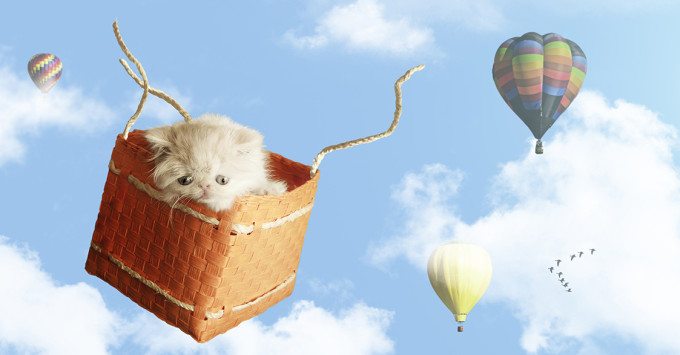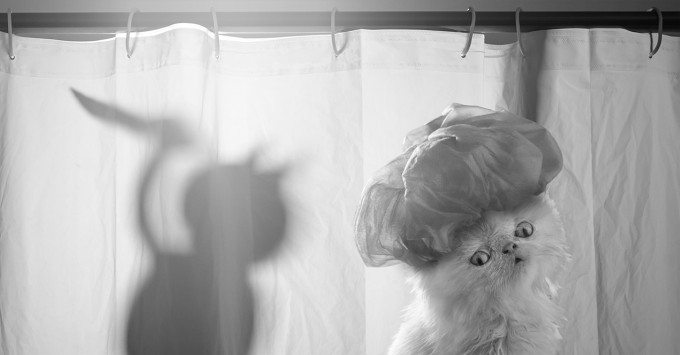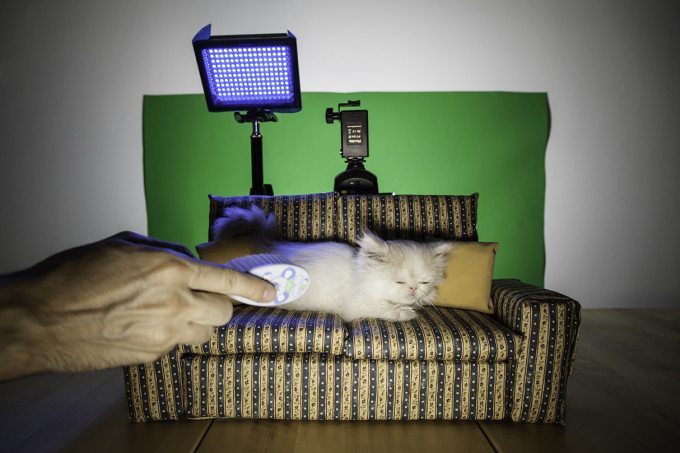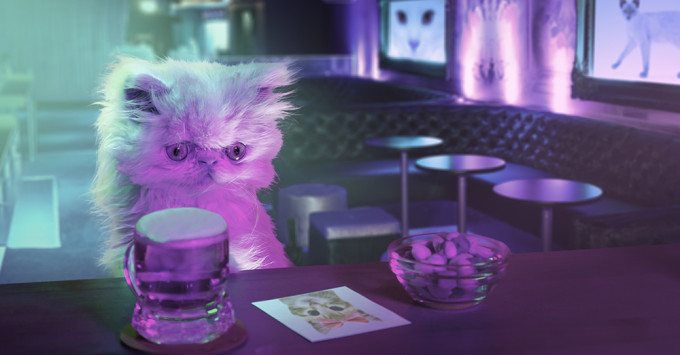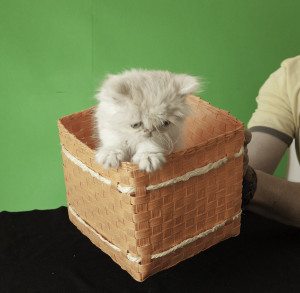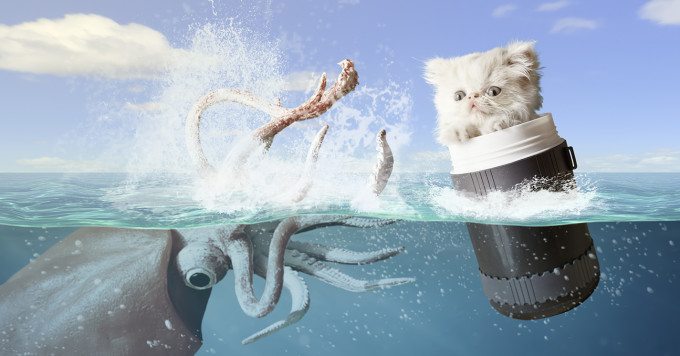All images by Jesus Segura. Used with permission.
Jesus Segura is the genius behind the Napoleon the Cat series which recently took off on IndieGogo. We loved the series so much we asked him to give us a behind the scenes look at working with the cat and his creative vision which is not only hysterical but whimsical and imaginative.
Phoblographer: Where do you get the inspiration for the images that you create and the situations that you put Napoleon in?
Jesus: As a kitten, Napoleon is so curious and he discovers things everyday. Every little daily detail is a new challenge, and I thought, “What if those challenges were growing more and more? What if he had to deal with strange, fantastic or absurd situations that no cat could possibly live in the real world?” So that was the starting point. Also, if you think of the idea that cats have nine lives (seven lives in Spain, don’t ask me why), you can put him in any crazy scenario and he’ll always emerge victorious. There’s another thing: the world is full of those ‘classic’ cat images, like a cat into a flower pot or a basket, a cat on a cushion or a cat just being cute. I wanted something different and funny for a change.
Phoblographer: Tell us about the gear and lighting used to create the images.
Jesus: I used a Canon Eos 5D Mark II. The brand isn’t too important, but I knew since the beginning that I wanted a full frame camera because that’s a great format if you want to create a ‘movie look’. The kind of lighting is something important, of course, but with Napoleon it is essential to choose wisely. That’s because he is just a little animal, and it’s not okay if you use flashing lights, because you can scare him and blind him. So I used LED lights–I love them. LEDs can provide you a wide range of lighting without getting hot or annoying Napoleon. You have to be very careful when you set the lights because you need to have in mind the final result of the photo after the post production. So the real lighting that exists when you take the picture has to match with the ‘virtual’ lighting that you will add later.
Phoblographer: How much time was spent each day creating the images?
Jesus: It’s difficult to say. First I have to think about the story I want to shoot and then I (badly) draw a sketch. After that I make a list of the objects and things I’m going to need. Then I set the stage and take photos using a little lion doll as a double of Napoleon, it helps me to adjust his lighting and the final look of the frame. We´ve been taking photos for three weeks and you can notice that at the end Napoleon is bigger than the first day. But the whole project took more than three months and it hasn’t ended yet.
Phoblographer: Everything is shot on a green screen, and then brought into Photoshop. How much work goes into each image on average?
Jesus: It depends on the picture, but it varies between 15 to 20 hours each one. The light on the green screen has to be the same on all the surface, otherwise you’ll have problems when you mix both digital and real images, which means more time in front of the computer.
Phoblographer: Does Napoleon like being a star? How does he react when he sees a camera?
Jesus: That’s a good question! Well, I try to turn each photographic session into a game for him. At first he always went towards the camera and smelled the lenses, so I had to change my strategy. When the stage is set, I don’t let Napoleon be on it until everything is ready for shooting. I do that because the first reactions of him, being in a place where he’s never been before, are always funny and useful. His working sessions are no longer than 15 minutes, because I think that’s enough time for him, otherwise he gets bored and wants to escape from the set or starts to play and dismantle everything. We use sounds or little toys in order to get his eyes looking at the right place, but that’s not as simple as it seems.


